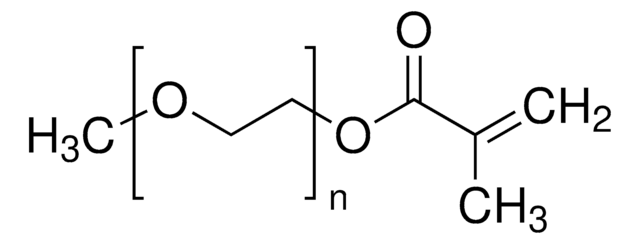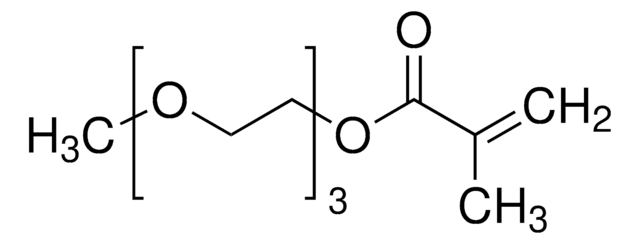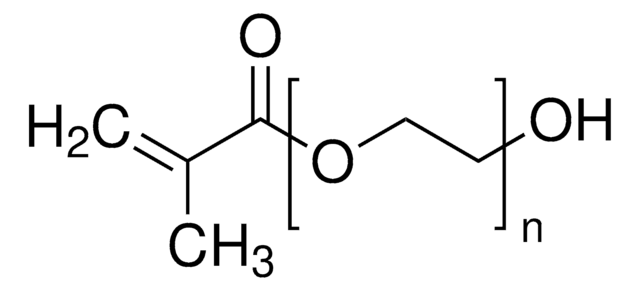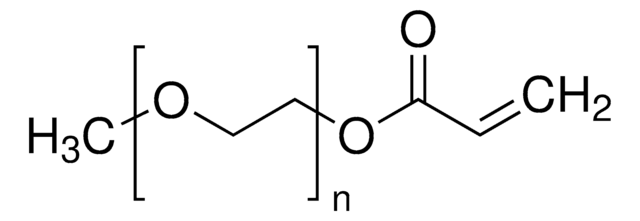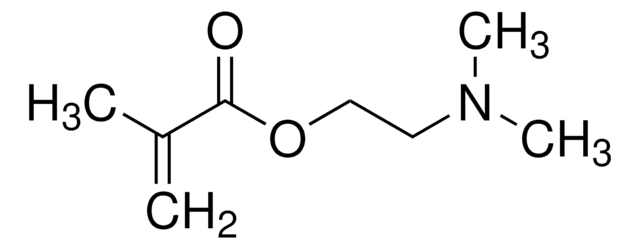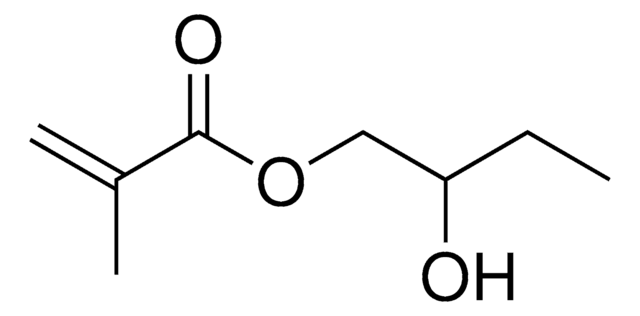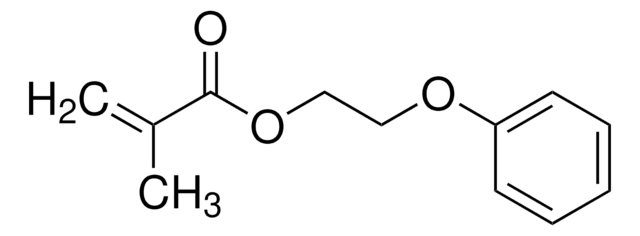추천 제품
분석
99%
양식
liquid
refractive index
n20/D 1.431 (lit.)
bp
65 °C/12 mmHg (lit.)
density
0.993 g/mL at 25 °C (lit.)
SMILES string
COCCOC(=O)C(C)=C
InChI
1S/C7H12O3/c1-6(2)7(8)10-5-4-9-3/h1,4-5H2,2-3H3
InChI key
YXYJVFYWCLAXHO-UHFFFAOYSA-N
일반 설명
Polymers prepared from this monomer may have uses in polyelectrolytes and may be biocompatible.
애플리케이션
Used in the synthesis of copolymers of styrene and 2-methoxyethyl methacrylate.
신호어
Danger
유해 및 위험 성명서
Hazard Classifications
Repr. 1B
Storage Class Code
6.1C - Combustible acute toxic Cat.3 / toxic compounds or compounds which causing chronic effects
WGK
WGK 1
Flash Point (°F)
149.0 °F - closed cup
Flash Point (°C)
65 °C - closed cup
개인 보호 장비
Eyeshields, Faceshields, Gloves, type ABEK (EN14387) respirator filter
이미 열람한 고객
Separation of stat-copoly (styrene/2-methoxyethyl methacrylate) samples according to composition by gradient high-performance liquid chromatography.
Glockner G, et al.
Journal of Applied Polymer Science, 37(11), 3147-3161 (1989)
Caroline R Szczepanski et al.
European polymer journal, 67, 314-325 (2015-05-09)
This work presents an approach to extend the period for phase separation, independent of temperature, in ambient phase-separating photopolymerizations based on the copolymerization of structurally similar mono- and di-vinyl monomers. Copolymer resins composed of triethylene glycol dimethacrylate (TEGDMA) and ethylene
Vitalii Rosiuk et al.
Langmuir : the ACS journal of surfaces and colloids, 35(21), 7009-7017 (2019-05-14)
Nanoprecipitation is a straightforward yet powerful technique to synthesize polymer nanoparticles loaded with various biologically active compounds or contrast agents. Particle formation in this approach is kinetically controlled, and various assembly parameters have been used to control the size distribution
자사의 과학자팀은 생명 과학, 재료 과학, 화학 합성, 크로마토그래피, 분석 및 기타 많은 영역을 포함한 모든 과학 분야에 경험이 있습니다..
고객지원팀으로 연락바랍니다.
